Scanning backs are kind of modified flatbed scanners
attached to a camera. They dominate the art reproduction market and
are often used for product shots. The resolution delivered is 6000x8000
(3x48MP, 3x as they capture all three RGB colors, Betterlight also
produces a higher res back). A capture of one shot can take 35-600
seconds. This also means that all
sort
of
movements
(camera and/or subject) are the enemy of any scanning back shots. This
means also that landscape photography is limited to more or less static
scenes.
But if everything works fine the BetterLight back can deliver stunning
detailed images. First we saw great landscape photos by Stephen
Johnson that showed the potential of (miss)using the BetterLight
scanning back for landscape work. Also our friend Jim Collum uses a
BetterLight now for over two years (his passion just revived as the
new USB unit is a lot faster and much lighter to carry). So we know
what a BetterLight image can be if all works fine.
We also recently started using a modified digital InfraRed
(IR) camera. The scanning back does not have it's own
IR cut-off filter and needs a IR cut-off filter in front or behind
the lens. But this also means that the BetterLight back can capture
visual and IR at the same time if we leave the IR cut-off filter
off. So we invited Mike Collette (President of BetterLight) for a
session in Point Lobos. Our goal was to photograph the Old Veteran
Cypress with and without the IR cut-off filter.
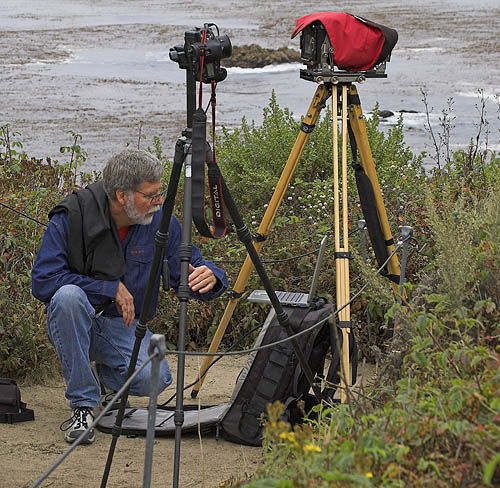
Mike Collette optimizing the exposure
All the equipment used by Mike (except
the tripod) was in this backpack. Once the 4x5 camera was setup Mike
used pre scans to optimize the tonality and perfect exposure.
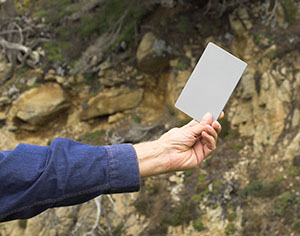
WB was set using a digital gray card
Note: The bellow of
his 4x5 camera leaks some IR and that is why Mike covers it with the
red cloth.
All BetterLight photos are copyright
Michael Collette. Round #1: Veterans Cypress

Shot without IR cut-off filter
We think that IR photos give us an additional
technique to be creative.
Note: You may realize
that the IR shots has a brighter center spot. This happens with some
longer lenses. Solutions:
- For IR color shots burn the center
- For IR B&W or false color shots you can replace the blue channel
by the green or red channel
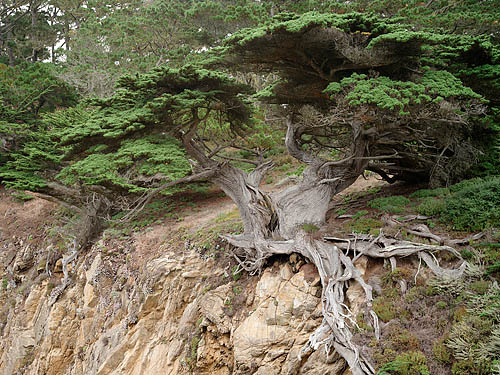
with IR cut-off filter

100% magnification (of a 6000x8000 pixel image)
Yes, the BetterLight can deliver stunning fine detail.
But there also artifacts due to some movement:
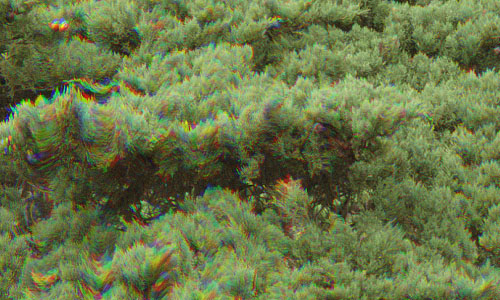
Moving shrubs
Fortunately this can be fixed using some moire removal
techniques:
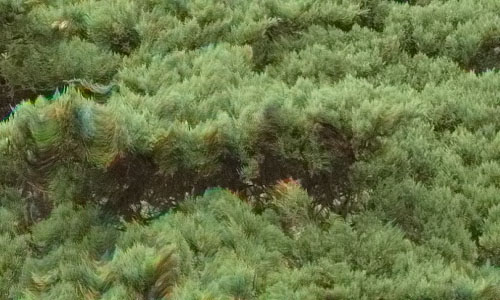
Fixed artifacts
We provide our readers a larger
crop for download (about 3.5MB). Again remember the
full image is 6000x8000 pixels!
Round #2 Point Lobos Rocks
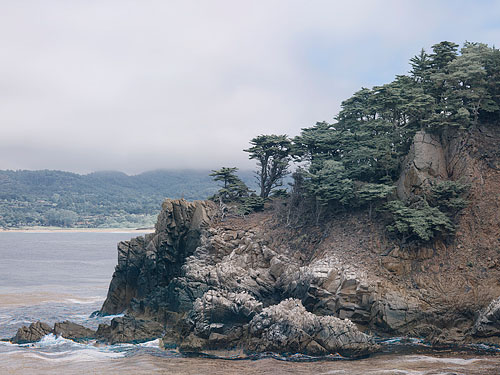
IR shot
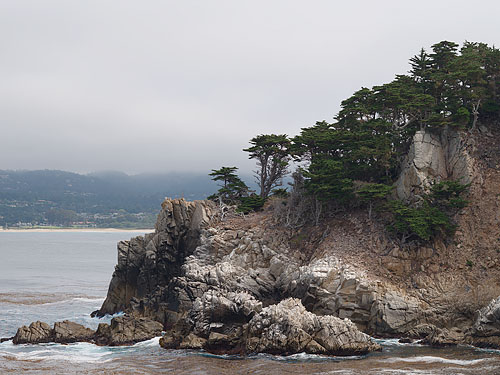
with IR cut-off filter
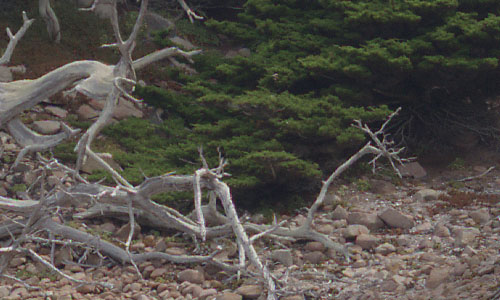
good detail
Water artifacts:

moving water

Same fix as above
We provide our readers a larger
crop for download (about 3MB). Again remember the
full image is 6000x8000 pixels!
We think we had a good day and the BetterLight
proved that you can use it for high detailed landscape shots if you
carefully select more static objects and are willing to do some fixes
in post processing.
Some 1Ds IR shots
We also used the chance to take a few
IR shots:
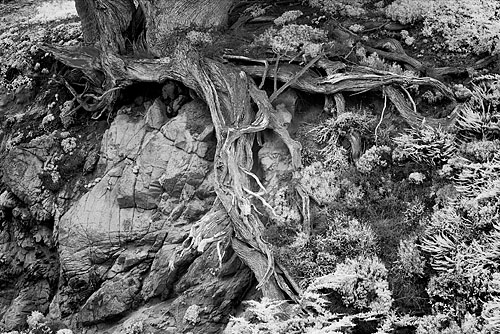
Root of Old Veteran Cypress (B&U Steinmueller)
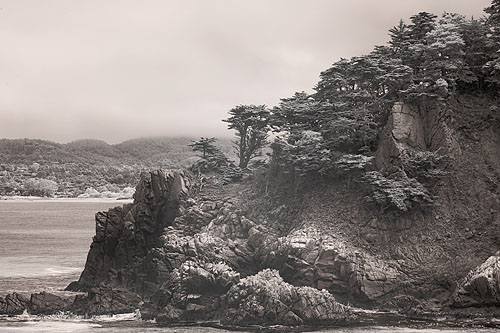
False Color Rocks
(B&U Steinmueller)
We want to thank Mike Collette for the
fun experience.
For more information on BetterLight check
out their website. |